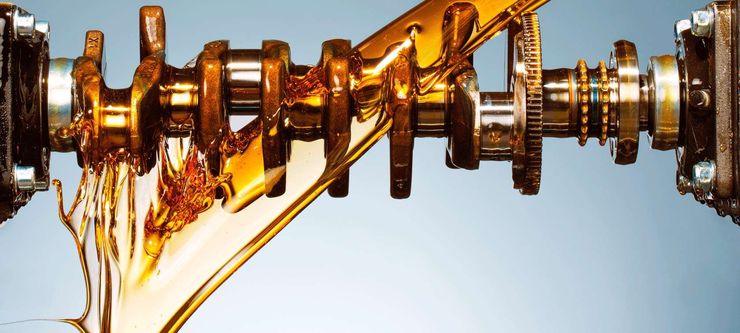Why you can’t choose synthetic 5W30 motor oil based on the price
- December 12, 2023
- 0
Most car owners are sensitive to the viscosity and price of engine lubricant. But at the same time, other – no less important – parameters of the lubricant
Most car owners are sensitive to the viscosity and price of engine lubricant. But at the same time, other – no less important – parameters of the lubricant

The viscosity is as in the manual, the price suits us, so let’s do it! Usually, a motorist’s choice of new engine oil follows approximately this scenario. In addition, some believe that the more expensive the product, the better it is by definition for the engine. The logic here is as follows: a high price is due to a large number of all kinds of good qualities. Other car owners believe that the main thing is the viscosity of the oil, and everything else is not important, they say, “they are poured from the same barrel anyway.” Both approaches are fundamentally flawed.
In fact, when choosing a lubricant, you should also pay attention to the Latin letters of the marking on the bushing – all these SM, SJ, SL (if we are talking about a gasoline engine) or CF, CJ, CG and others when we are looking for lubricant for a diesel unit. These icons indicate that a particular oil meets the American Petroleum Institute API standards.
Broadly speaking, this type of marking tells you for which generation of engines the ‘synthetic materials’ you have in mind are intended. The API has been in use since the 1970s. And since then, he has periodically introduced new standards – as combustion engines are improved and the requirements for oils from car manufacturers change.
As an example, let’s look at the characteristics of API markings for “gasoline” engine lubricants. Suppose you have in your hands a can of “synthetic 5W30” with the letters SJ. And not very expensive! Only for your “Chinese” with a turbo engine! Or not?
In principle, this is enough, you can fill it – the engine will not immediately “knock” and the turbine will not explode. But keep in mind: SJ oils appeared in 1996 and were intended for engines of that time and even older engines – mainly conventional, reliable and indestructible “aspirated” engines. Their owners weren’t concerned about significant oil loss between changes.
And they did not hesitate to replace it more often than once every 10,000 kilometers, without suspecting that in the future the maintenance intervals would increase to 15,000-20,000 km. In general, it is better for your modern engine not to be “fed” with SJ oil, but with something that is at least SM. It “went to the masses” after 2004. It is believed that such compounds have good resistance to oxidation and deposits and protect the engine from wear when starting in cold weather. SM lubricants are more expensive than the first described. But it is worth it.
But you should certainly not pay too much for a lubricant that complies with the youngest API category: SN. The main difference from oils with other indices is the high degree of energy saving (ultimately cost-effective). For Russian conditions, with our love for warming up the car in the morning, it looks downright ridiculous. In addition, it has a reduced phosphorus content, which in theory extends the life of the catalyst. This is not important in our case either: you do not intend to exploit your “Chinese” for decades to come? This means that the lifespan of the “catalyst” does not have to be a problem. Therefore, you can save a little and not go bankrupt on SN.
But if you have a car from the early 2000s, but there is no point in looking at expensive oils: take the SL! Or even the even simpler SJ – exactly what you need for your car. There is absolutely no point in paying too much for “more modern” lubricants!

The viscosity is as in the manual, the price suits us, so let’s do it! Usually, a motorist’s choice of new engine oil follows approximately this scenario. In addition, some believe that the more expensive the product, the better it is by definition for the engine. The logic here is as follows: a high price is due to a large number of all kinds of good qualities. Other car owners believe that the main thing is the viscosity of the oil, and everything else is not important, they say, “they are poured from the same barrel anyway.” Both approaches are fundamentally flawed.
In fact, when choosing a lubricant, you should also pay attention to the Latin letters of the marking on the bushing – all these SM, SJ, SL (if we are talking about a gasoline engine) or CF, CJ, CG and others when we are looking for lubricant for a diesel unit. These icons indicate that a particular oil meets the American Petroleum Institute API standards.
Broadly speaking, this type of marking tells you for which generation of engines the ‘synthetic materials’ you have in mind are intended. The API has been in use since the 1970s. And since then, he has periodically introduced new standards – as combustion engines are improved and the requirements for oils from car manufacturers change.
As an example, let’s look at the characteristics of API markings for “gasoline” engine lubricants. Suppose you have in your hands a can of “synthetic 5W30” with the letters SJ. And not very expensive! Only for your “Chinese” with a turbo engine! Or not?
In principle, this is enough, you can fill it – the engine will not immediately “knock” and the turbine will not explode. But keep in mind: SJ oils appeared in 1996 and were intended for engines of that time and even older engines – mainly conventional, reliable and indestructible “aspirated” engines. Their owners weren’t concerned about significant oil loss between changes.
And they did not hesitate to replace it more often than once every 10,000 kilometers, without suspecting that in the future the maintenance intervals would increase to 15,000-20,000 km. In general, it is better for your modern engine not to be “fed” with SJ oil, but with something that is at least SM. It “went to the masses” after 2004. It is believed that such compounds have good resistance to oxidation and deposits and protect the engine from wear when starting in cold weather. SM lubricants are more expensive than the first described. But it is worth it.
But you should certainly not pay too much for a lubricant that complies with the youngest API category: SN. The main difference from oils with other indices is the high degree of energy saving (ultimately cost-effective). For Russian conditions, with our love for warming up the car in the morning, it looks downright ridiculous. In addition, it has a reduced phosphorus content, which in theory extends the life of the catalyst. This is also not important in our case: you do not intend to exploit your “Chinese” for decades to come? This means that the lifespan of the “catalyst” does not have to be a problem. Therefore, you can save a little and not go bankrupt on SN.
But if you have a car from the early 2000s, but there is no point in looking at expensive oils: take the SL! Or even the even simpler SJ – exactly what you need for your car. There is absolutely no point in paying too much for “more modern” lubricants!
Source: Avto Vzglyad
Donald Salinas is an experienced automobile journalist and writer for Div Bracket. He brings his readers the latest news and developments from the world of automobiles, offering a unique and knowledgeable perspective on the latest trends and innovations in the automotive industry.